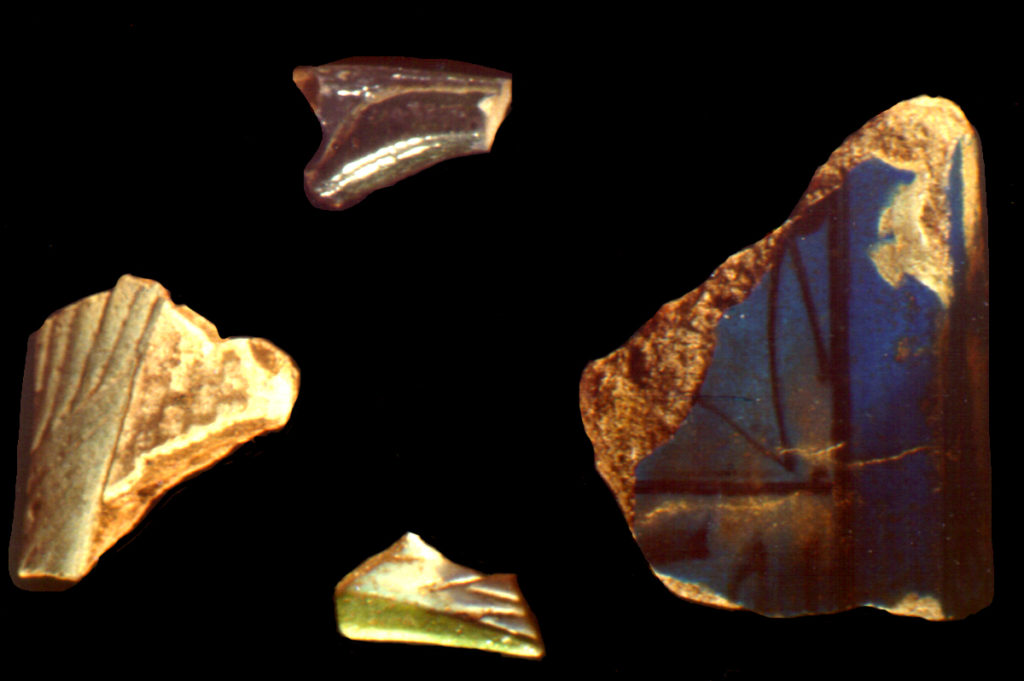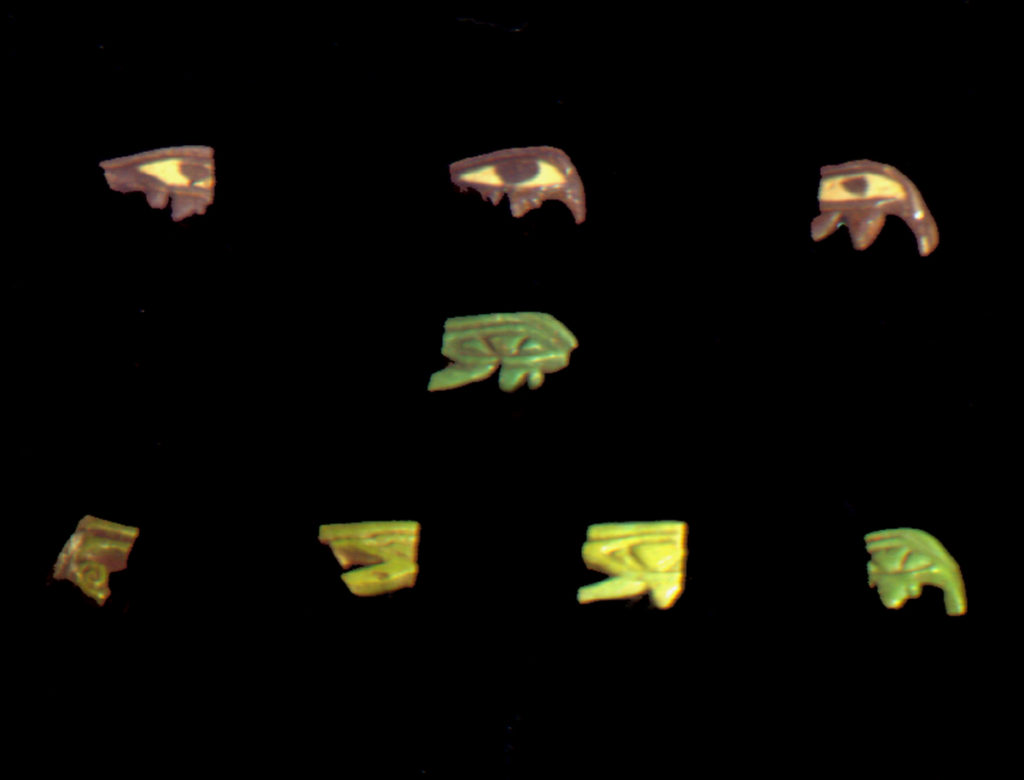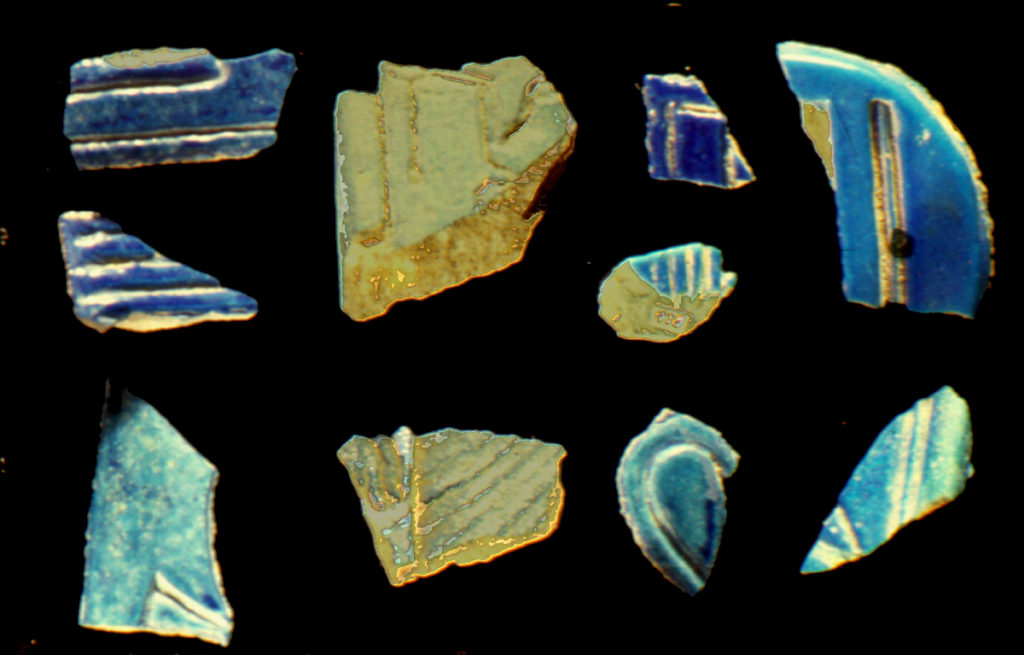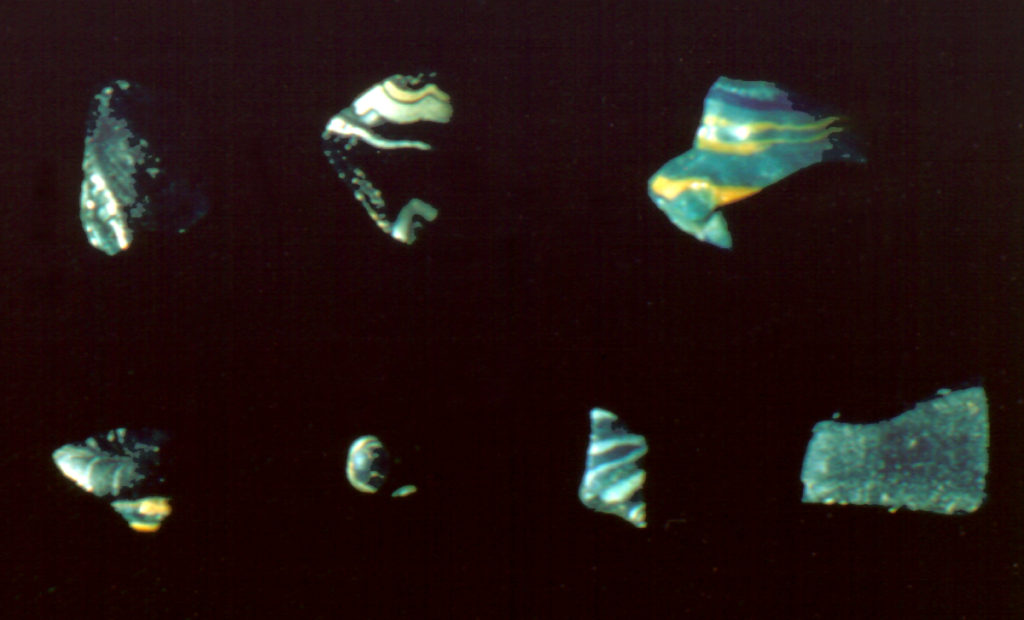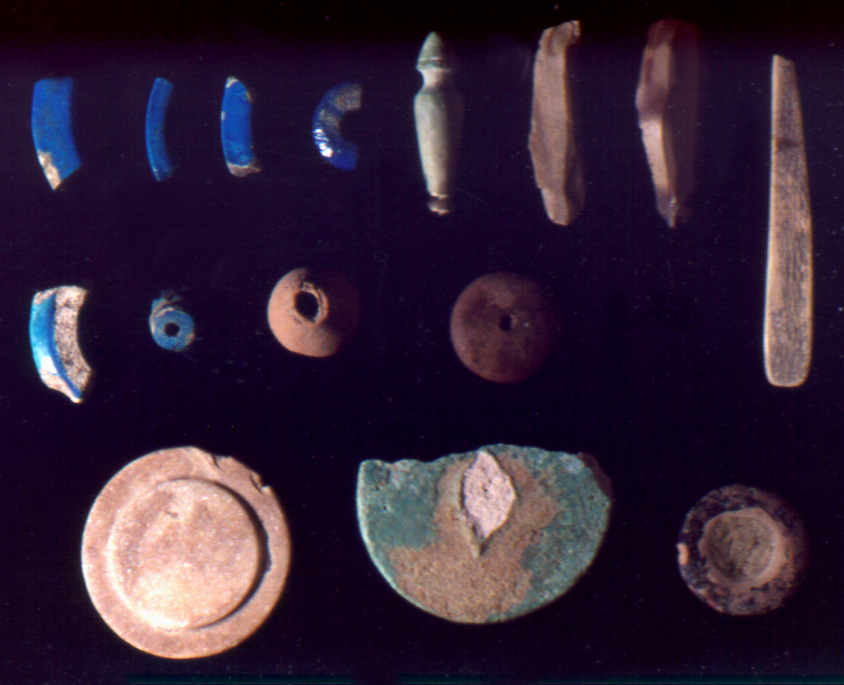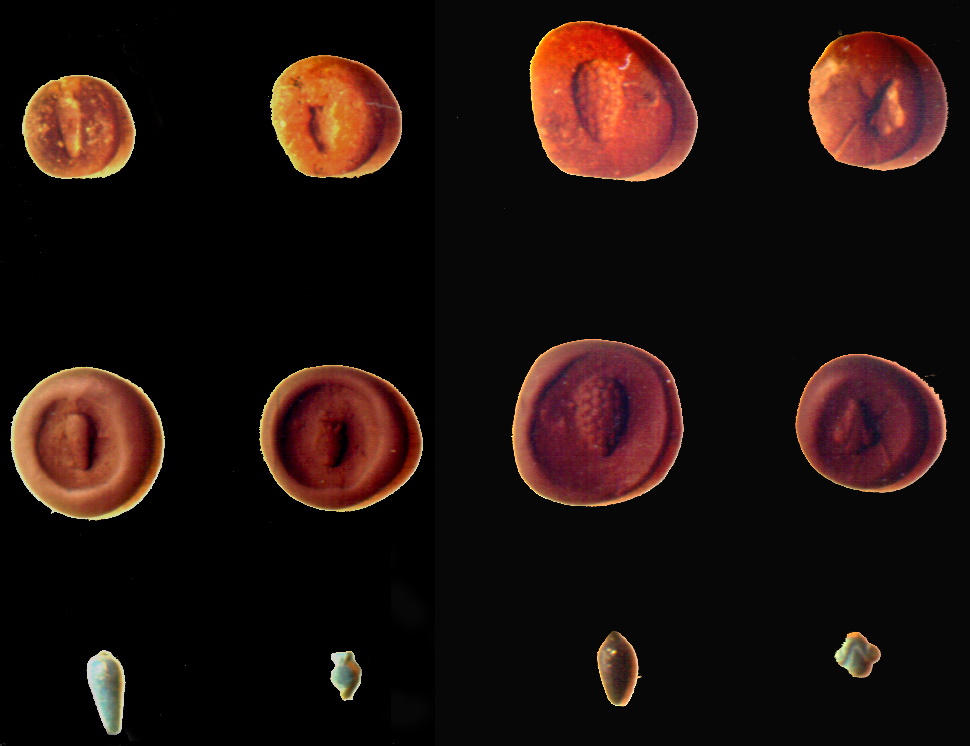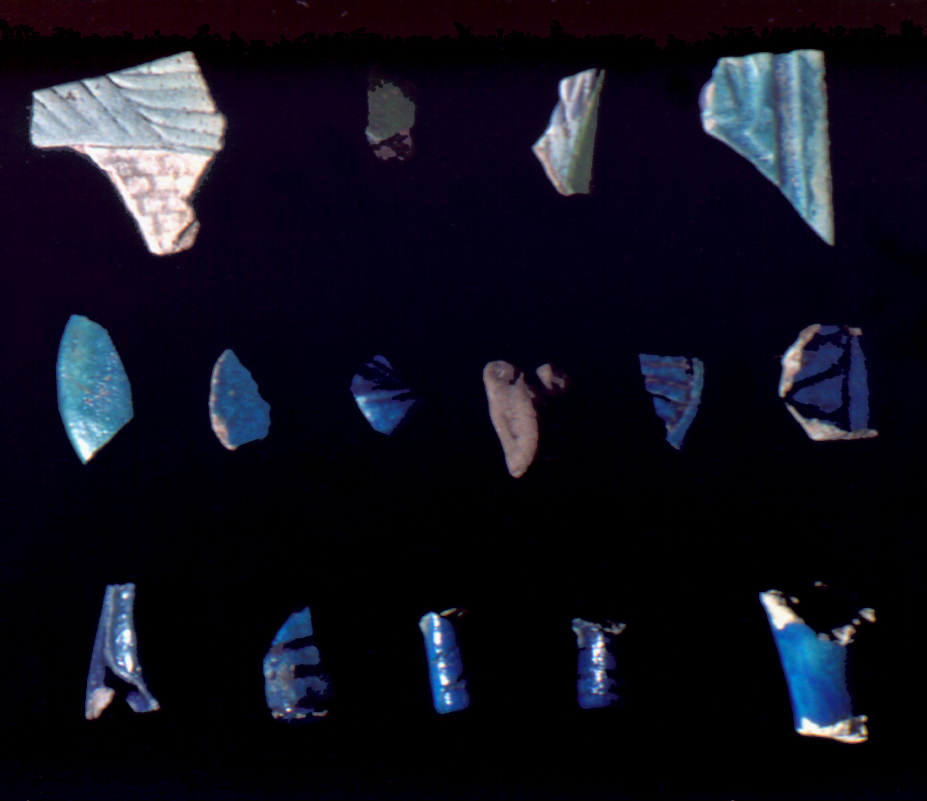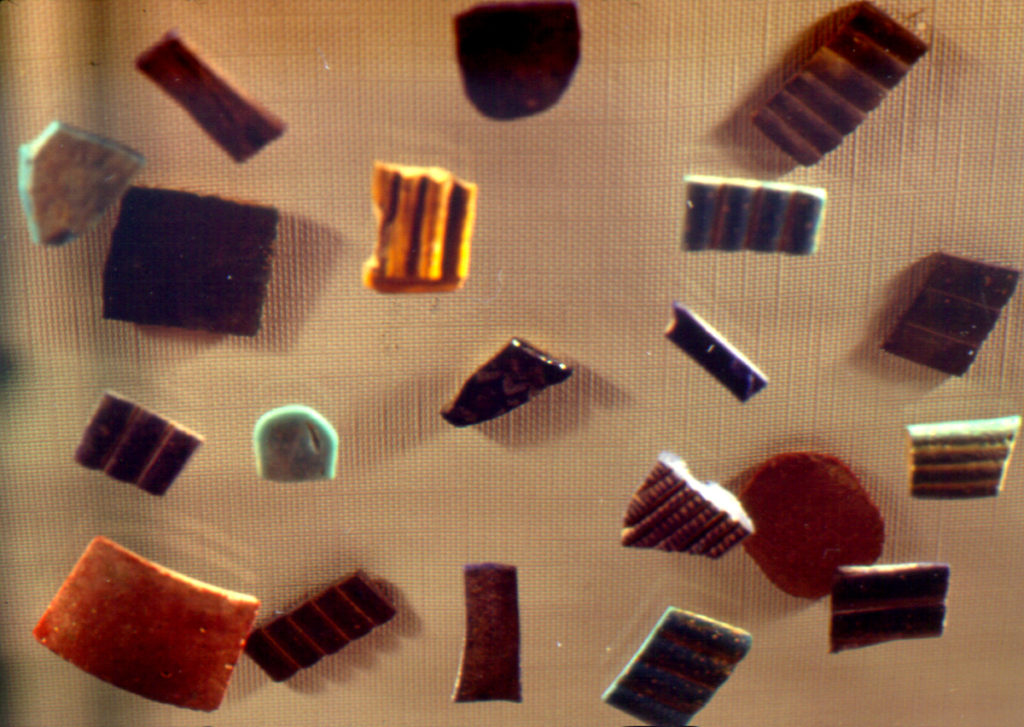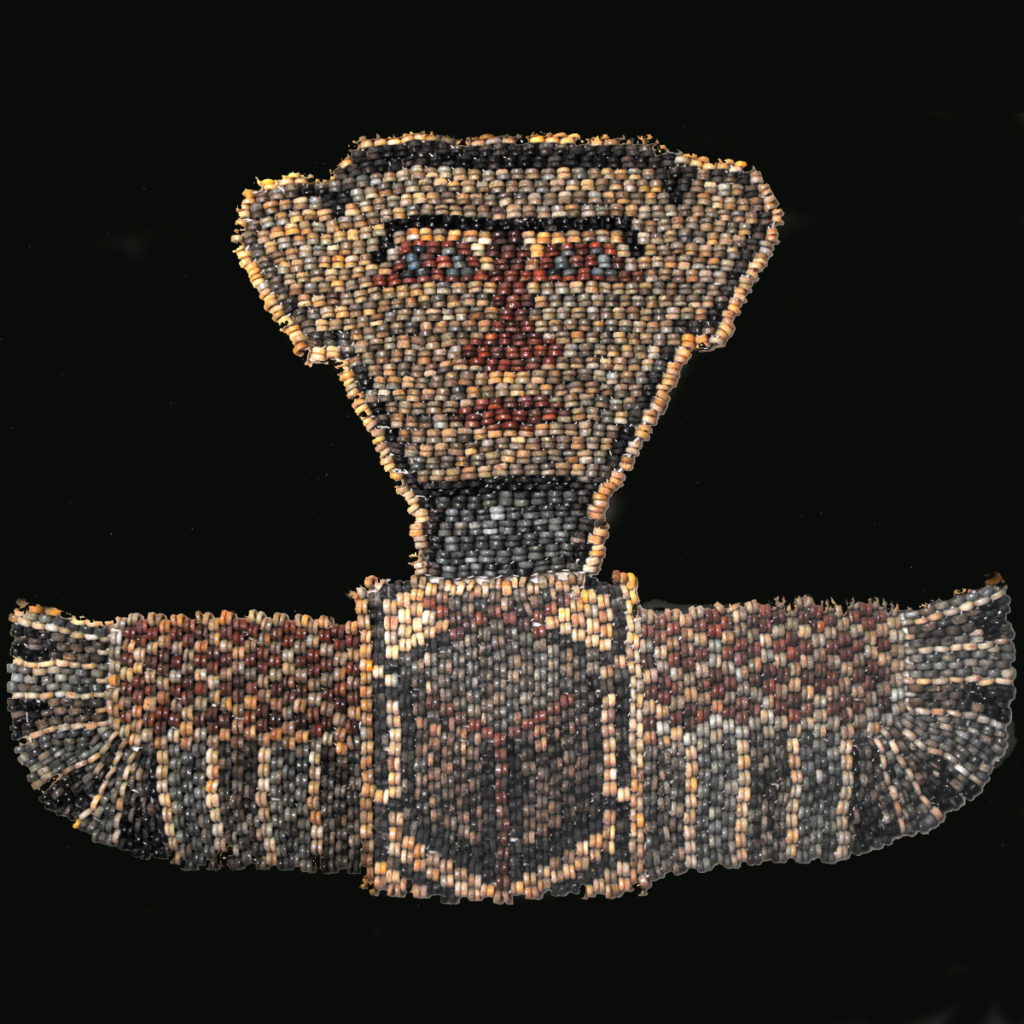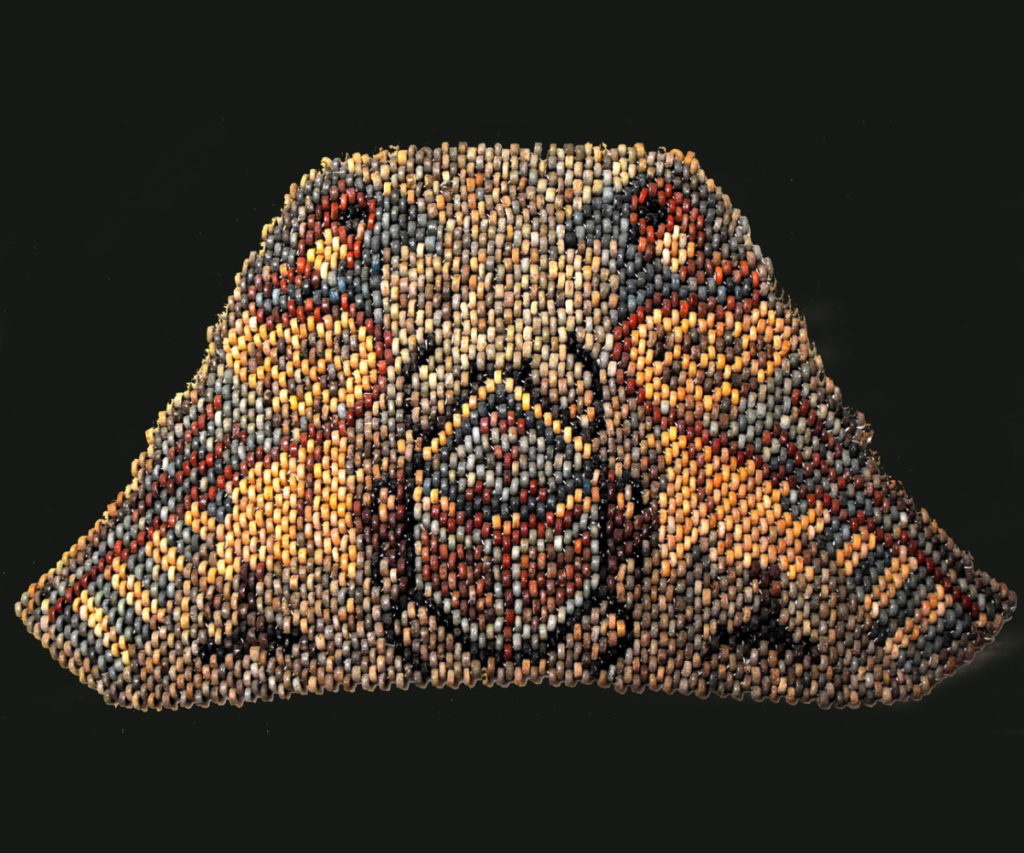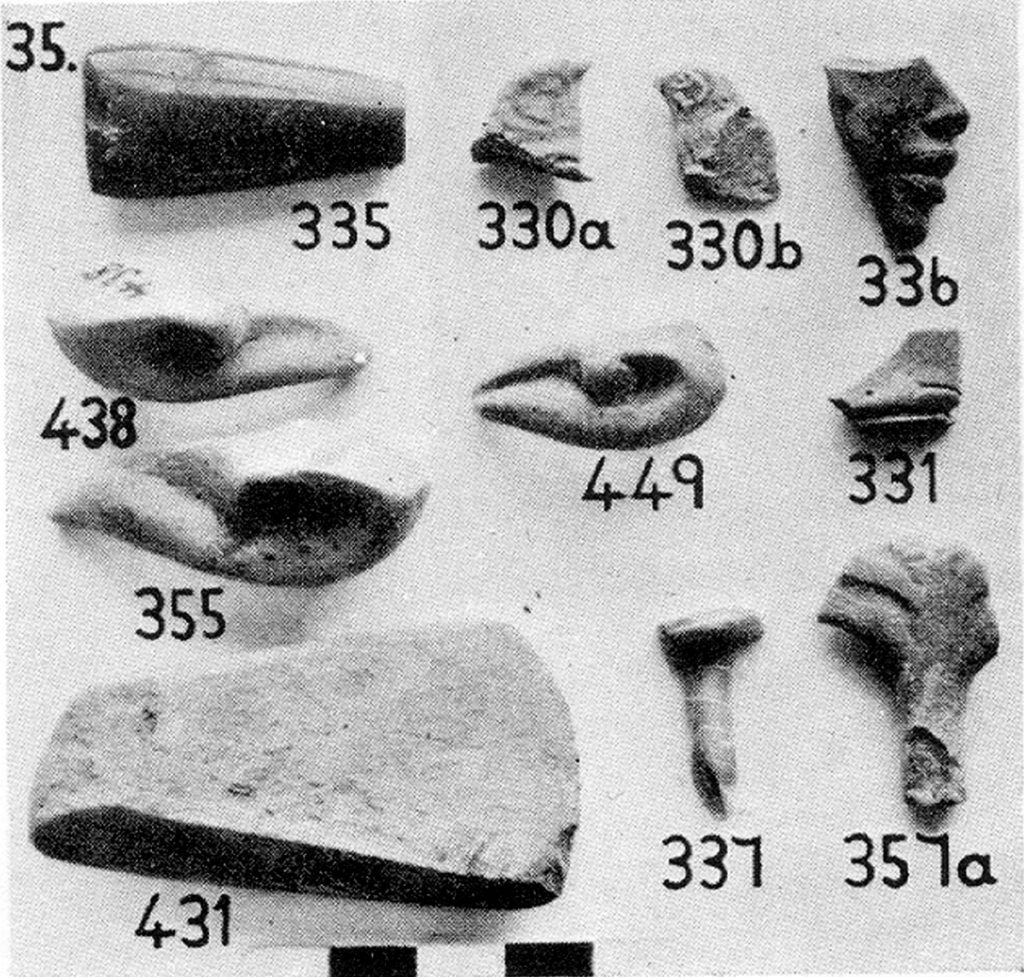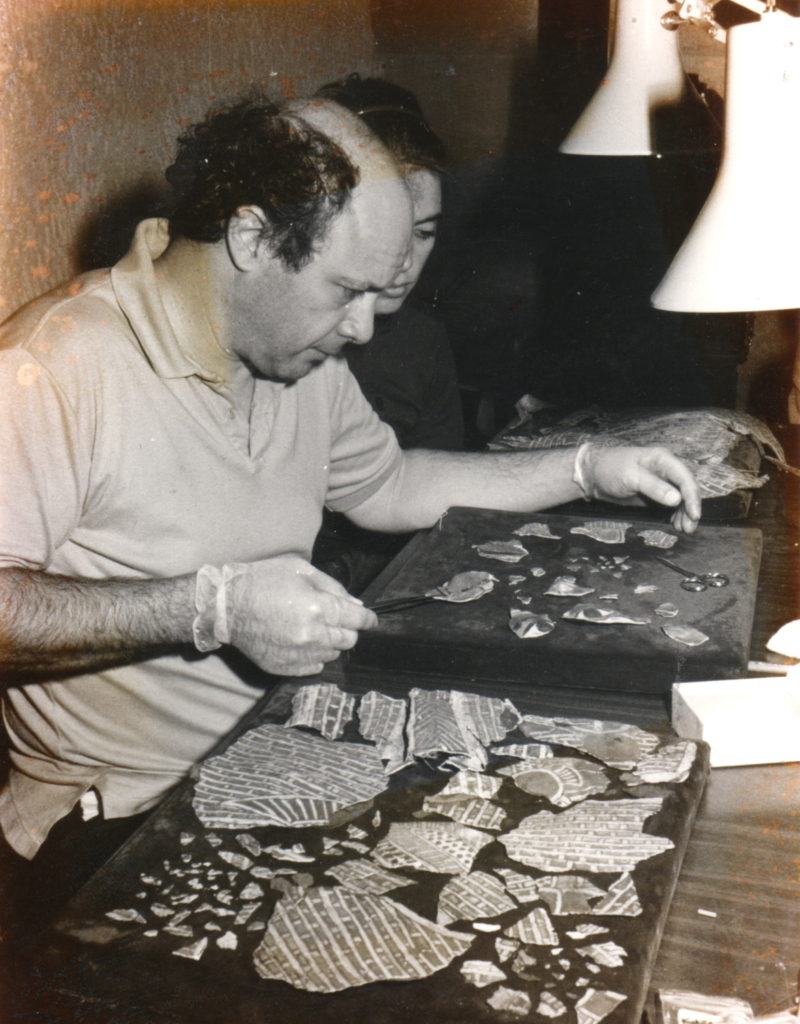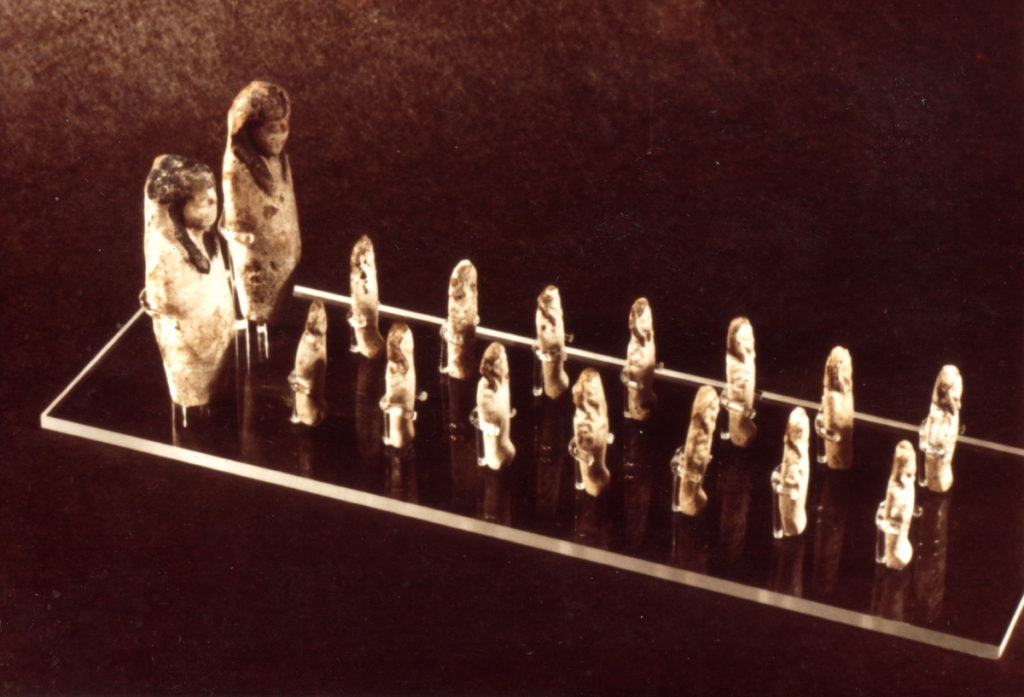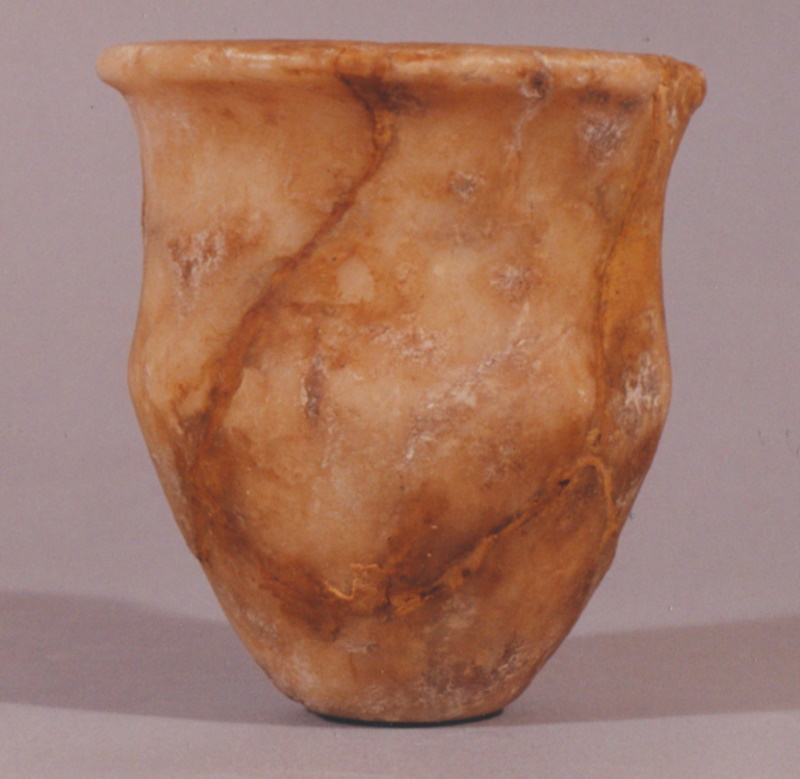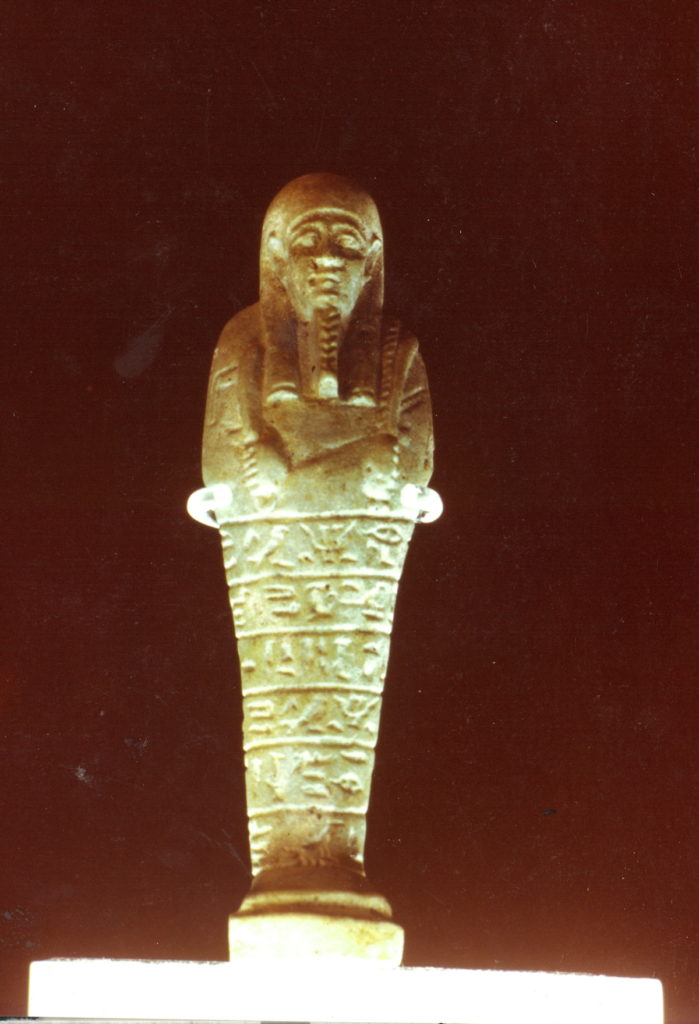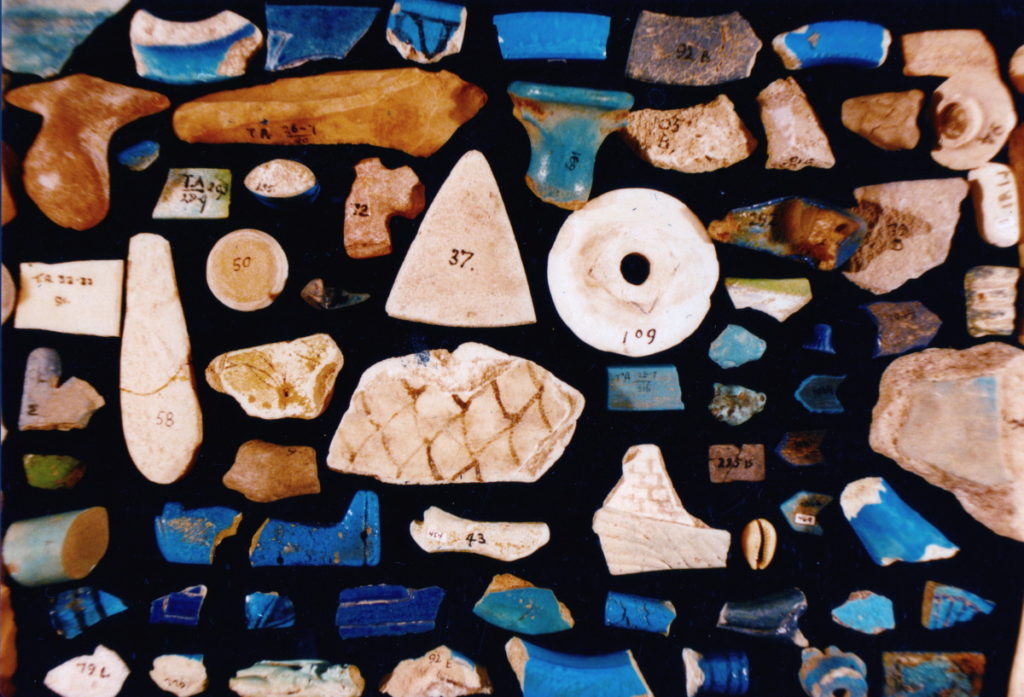
A number of years ago, an auction lot from the Egypt Exploration Society’s 1936 auction was acquired by my friend, noted coin specialist and antiquarian author, collector and dealer, the noted Amarna expert, Joel Malter.
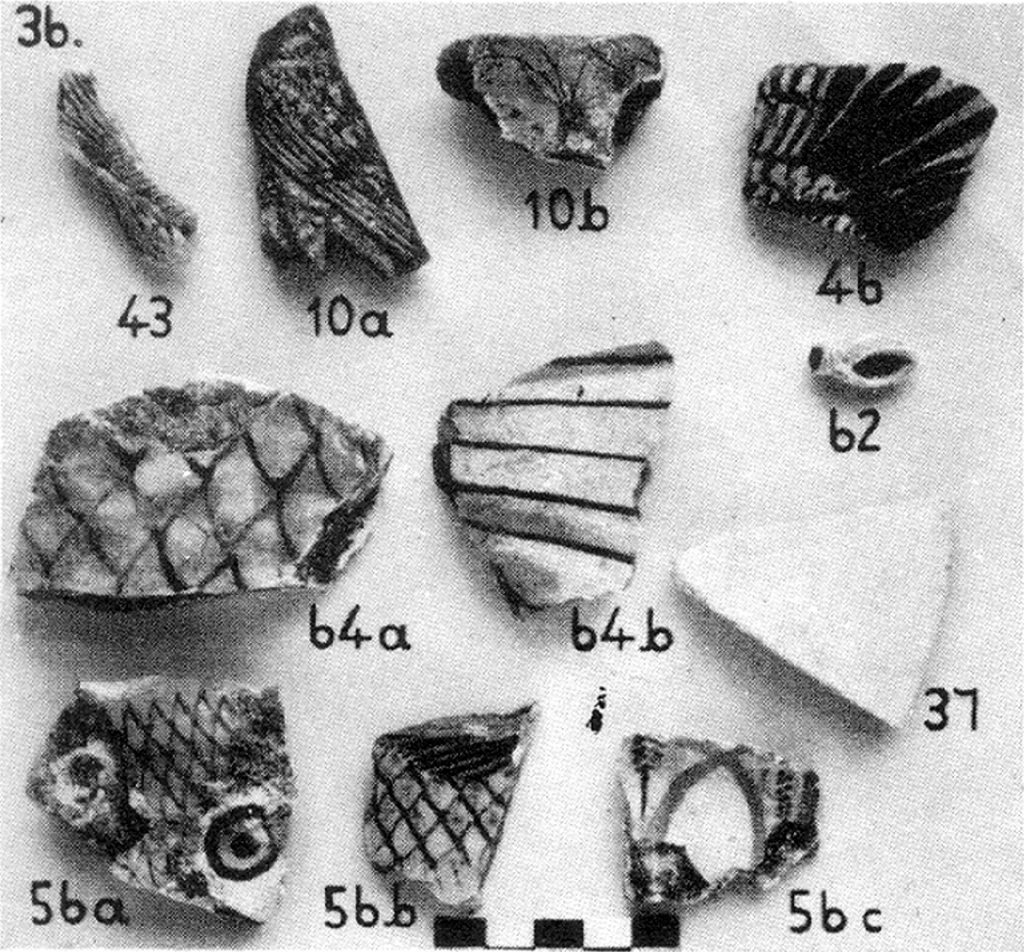
He delivered the collection personally, and we created an installation for the long-forgotten 18th Dynasty pieces, mostly statuary and inlay, with about 2 kg. of all types of beads, all created with unique Amarna glaze types, and only for the Royal family, by the Amarna workshop.
These wall inlays are listed as “10a” and “43” in the above photo from the excavation record journal. They are recorded by Pendleton as having come directly from the interior of Meryt-Aten’s apartment in the North Palace grounds, along with Akhenaten’s many wives, concubines and children.
These faience rings were personally distributed by the Pharaoh at the annual Nile festival. The glaze types are unique to Amarna and only existed for 18 years out of the thousands of years during which the Egyptian empire existed.
These larger ceramic inlays show parts of birds and flowers.
Fragments of Meryt-Aten’s cosmetic jars show glass to be a very sophisticated science by the 18th Dynasty, around 1850 B.C. — the stripes and inclusions are very tricky and require some serious knowledge of the properties of glass and the methods of its manufacture.
The deep blue somewhat circular inlays are about two inches long, if that gives you any perspective on how they were used in wall decoration.
The two flint knives in the upper right corner could have been used for a variety of applications, anything from surgical to scraping fish or fowl in preparation for the evening meal.
Here’s something totally unusual, and it happens because these items were excavated at the North Palace Ceramic Workshop. What you see are the actual glazed beads on the bottom row. The TOP row is the original mold for the bead, and the middle row is the impression taken from the mold today.
These items appear in the photo plates of the excavation records published by the Egypt Exploration Society in 1936. Nowhere else will you see these particular glaze types.
It might be helpful for curators to see these definitive color photos of inlays that came from Palace walls and articles of daily use, in order to compare them with the particular finds they are researching right now.
Not even the Met has this — theirs is featured in the Lisht Exhibit, but it’s a 19th Dynasty copy of this one, which came out of the North Palace at Amarna in Season 1935-36.
The double Horus and Scarab Beetle are typical of the decoration that found favor in the Palace of Akhenaten and Nefertiti and their children Tutankhamen and his sister, Meryt-Aten.
This is another photo published in the excavation records. All the pieces shown here have been carved into their present shape, and none of them have been photographed in color until now.
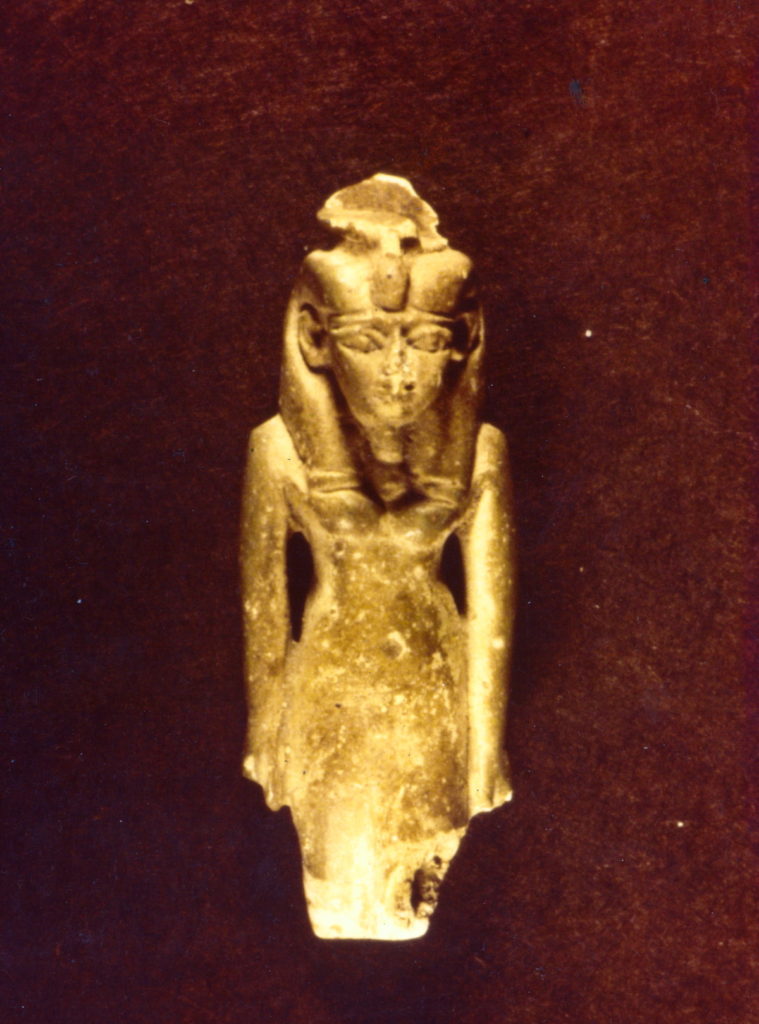
Our beads and other jewelry elements were found in the apartment of Princess Meryt-Aten, sister of the most famous Pharaoh of them all, King Tutankhamen, popularly recognized as “King Tut”, the boy-king.
We also had in hand the complete auction records from the 1935-36 season’s excavations, and several of those plates show some of what we have in our possession.
Notably, the pieces are Petrie-numbered, and therefore instantly easily identified as the same piece when seen in different photos, all of which are, in the 1936 publication of the Amarna excavation records, reproduced only in black and white.
Here is the most famous collection of North Palace inlays in full color for the first time. We are currently reconstructing the jewels of Princess Meryt-Aten and need your help and support for this important and long-neglected project regarding the royal family of Pharaoh Akhenaten, husband of Queen Nefertiti.
It is possible that some of these items belonged to the queen, and it was not uncommon for the queens to give their used jewelry to their kids, same as today.
Realize that NONE of these items are tomb burials, and NONE of the beads were burial beads.
This alabaster jar probably held some sort of cosmetic or salve.
They were found, as recorded in the official documentation, specifically at one spot in the royal apartments, in the specific apartment of Princess Meryt-Aten, and the inlays were all excavated in the spot where the royals lived.
The cosmetic jars and instruments found in addition to the inlays and beads, are technically considered “Articles of Daily Use”, and we have several of them to show.
This Ushabti or tomb-helper was used by one research team to determine the actual throne-name of Nefertiti, which was Neferneferuaten, and she can be proven to have ruled after Akhenaten was overthrown.
She was replaced by King Tut, who was in turn replaced by his counselor — ain’t it always the case?
Princess Meryt-Aten’s famous necklaces and earrings and other jewelry items are being reconstructed laboriously, following the precise original layouts and constructions wherever possible.
The modern gold beads and findings, where used, is part of the reconstruction conservation process.
Of course I try to avoid modern materials wherever possible, with the aim, however, of recreating the jewelry as closely as possible to its original form and feel — you can definitely feel the gold, and the beads are powerful beacons of antiquity.
I’ll keep you posted on developments.
See You At The Top!!!
gorby


